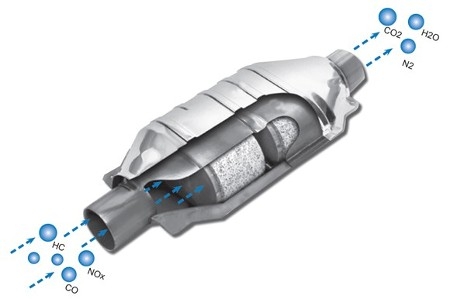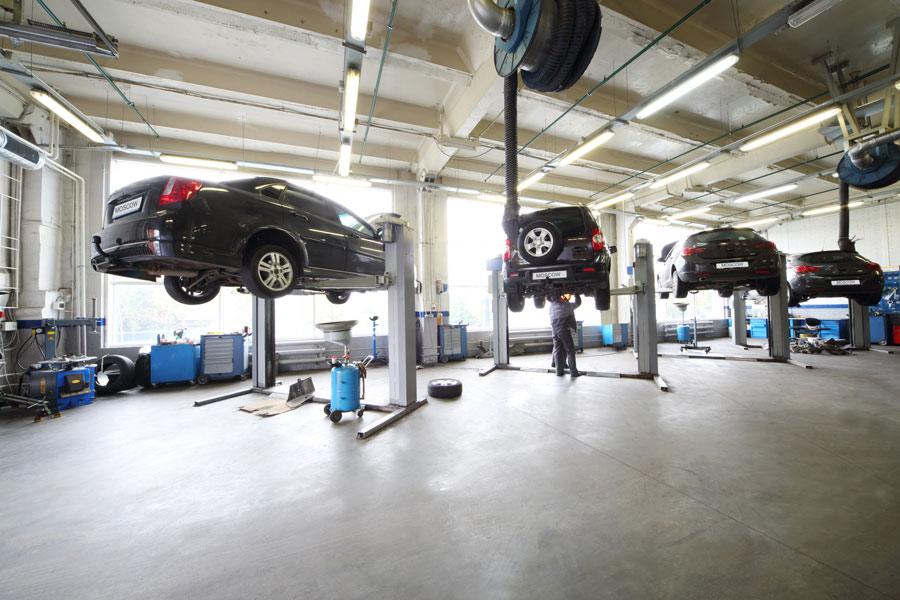7 Tips to Preserve Your Catalytic Converter and Avoid Costly Repair
How many of you know what a catalytic converter is? Well, for a start, it’s one of the most expensive auto parts to replace as it contains precious metals like Platinum, Palladium and Rhodium. So, what is this curious device and why is it so important?
The catalytic converter in your car eliminates toxic substances in the exhaust before it gets emitted into the environment. Without this special device, we would be breathing in toxic, cancer-causing car emissions, and the environment would be wrecked by harmful greenhouse gases.

Hydrocarbons, carbon monoxide and oxides of nitrogen from the engine exhaust pass through the catalytic converter and are converted into water, carbon dioxide and nitrogen.
Where is it found?
An integral part of your car’s exhaust system, the catalytic converter is found between the engine and the muffler.
What Happens When Your Cat Converter Fails?
If your converter fails, you can expect many problems like poor acceleration and increased fuel consumption. But more importantly, your car becomes a moving cancer hazard!
Depending on your make and model, failed catalytic converters can be very expensive to replace, ranging anywhere from a few hundred to a few thousand dollars!
Ouch!
7 Handy Tips to Keep Your Cat Converter in Good Shape
If treated with care, cat converters can usually outlast the useful life of a vehicle and can even be recycled upon scrapping for some quick cash. To avoid the high cost of replacement or repair, here are 7 fuss-free tips to help keep your converter in shape until you sell or scrap your car.
- Never use low-grade fuel! Leaded fuel can cause lead poisoning and reduce converter efficiency. Always go with the grade recommended or required by your owner’s manual. Your engine would thank you too.
- Use lubricants and fuel additives only if they have been approved by the manufacturer i.e. OEM approvals. Non-approved lubricants and additives may contain components that when combusted, create byproducts that damage your converter.
- When driving on uneven roads, ensure that your converter does not hit the group during the bumps. The heart of the converter is usually made of ceramic, which shatters easily upon impact.
- Fire hazard warning! Check your injector nozzles for clogs, which can lead to misfiring. This potentially leads to unburnt fuel reaching the converter and then burn there, causing severe damage to the converter or even set your car on fire!
- Avoid driving over deep puddles. Catalytic converters operate at high temperatures. When it comes into contact with water e.g. in a puddle, it cools and contracts rapidly, which can cause the substrate to break.
- If your acceleration feels ‘off’ and your mileage is more than 50,000km, it is a tell-tale sign that your converter’s efficiency has declined, and needs professional converter washing.
- Early detection. When servicing your car, inspect the converter. Look (listen) out for unusual noises, cracks or other damage to the external shell and particles in the exhaust. If you spot any of these, there is a chance that the converter might need to be replaced.
When all else fails and you do need to get a converter replacement, not all is lost. Converters contain precious metals such as Platinum, Palladium and Rhodium (yes, the stuff you find on jewellery), and can potentially be sold to a converter-recycling company. This should get you substantially mor7e cash than selling it to a regular scrap collector.
Guest Contributor: BR Metals
BR Metals is an industry-leading specialist in the recycling of Platinum Group Metals (PGMs) from used catalytic converters, petrochemical catalysts, oxygen sensors and spark plugs.




